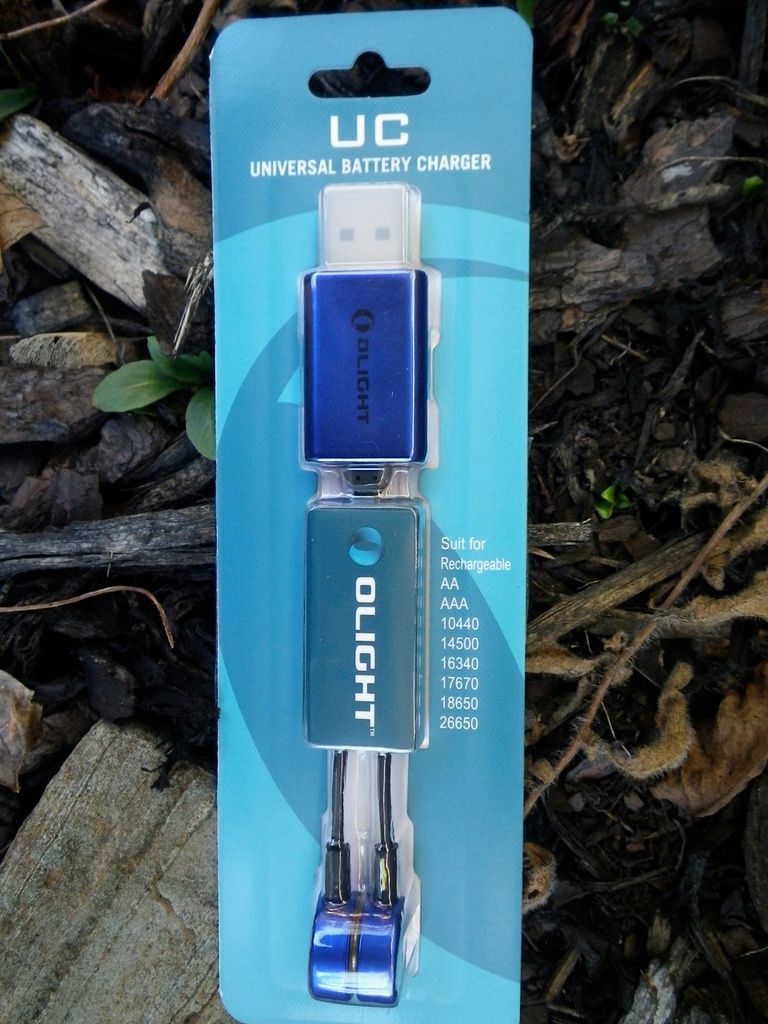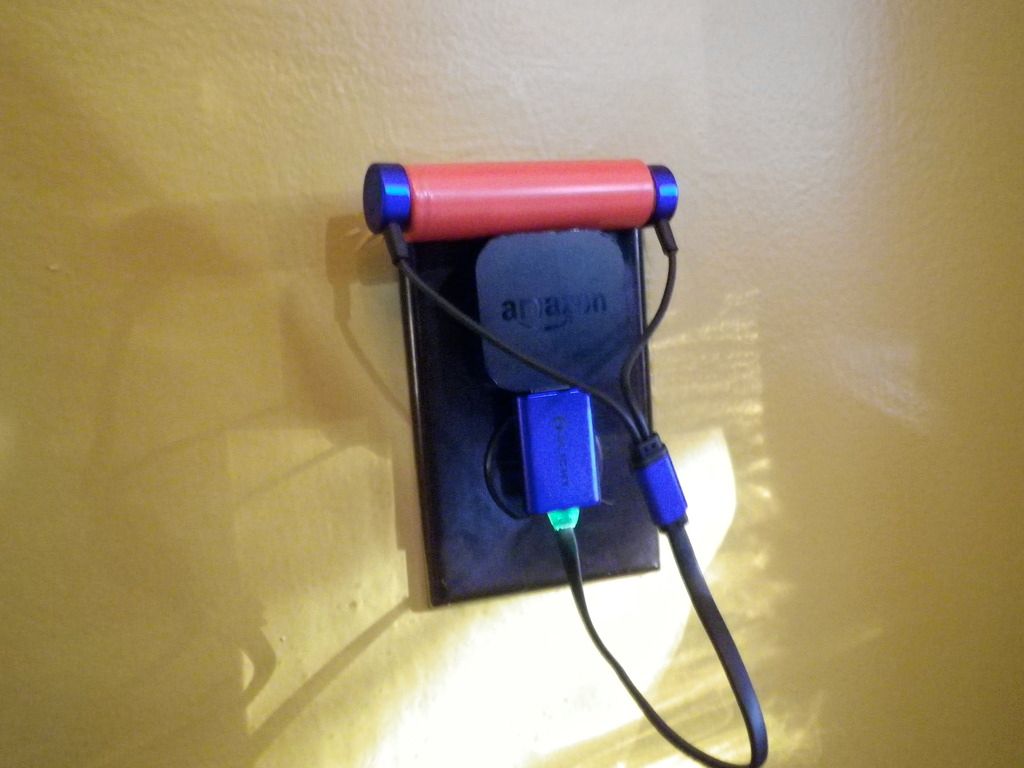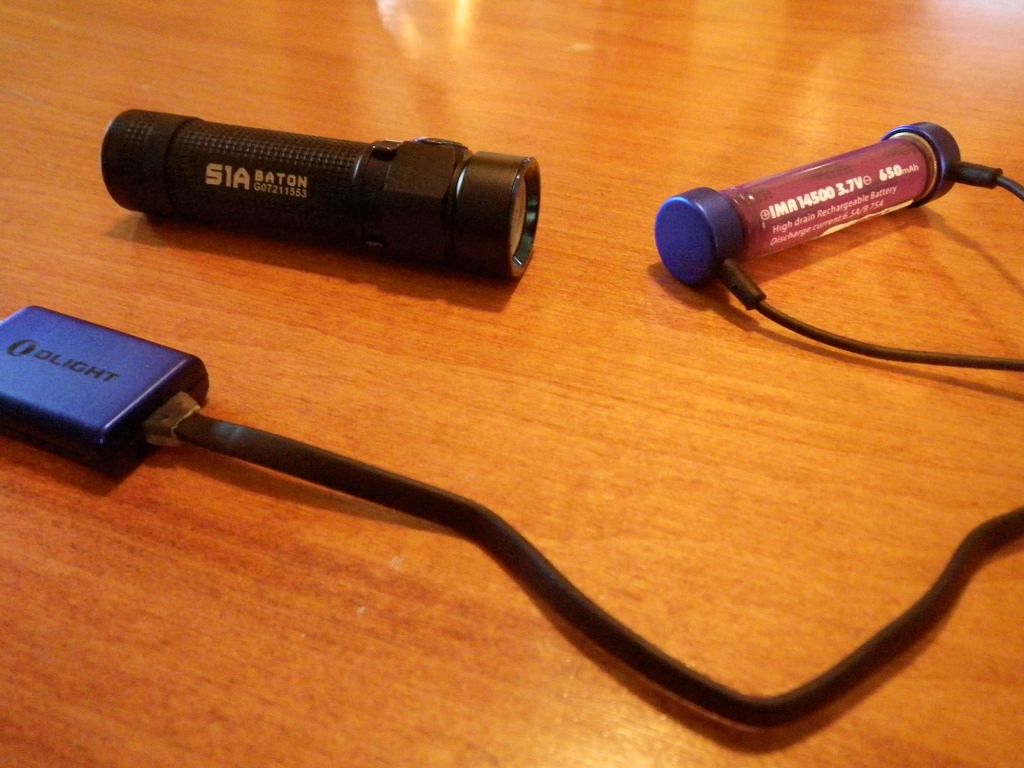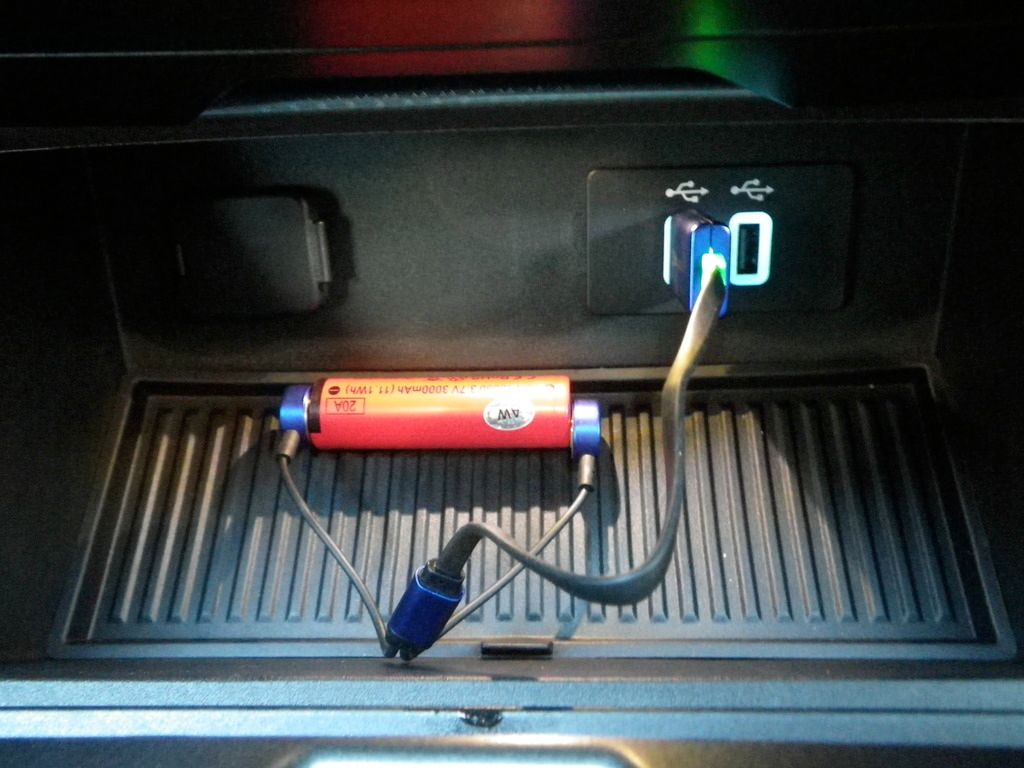Let me just say up front that, unlike some of my recent flashlight reviews, this charger was purchased with my own money.
With that out of the way, let’s talk about this charger, shall we?

This is a very small, single cell charger that can handle a wide variety of cels and is powered by virtually any USB source.
According to Olight’s product page, this charger should be able to charge every LI/IMR/INR/ICR cell from the tiny 10340 all the way up to the huge 26650 and everything in-between while also being able to charge your AAAA/AAA/AA/C NiMH/NiCd batteries.

Because the charger regulates the input voltage, you can plug it into any USB power source and charge up. That versatility is pretty nice. Nice too is the fact that the charger is unconcerned which magnet goes on which end, so, while you normally shouldn’t, in this one case you can forget about positive and negative.
It has a charging current of 750 mA. Lots of serious flashlight guys feel like this is too high for the smaller cells and can explain all the math and science that leads them to fell this way. All I know is, guys whom I trust say that the charger is best suited to cells with at least 1250 mAh of capacity.
I mostly run 18650s with big mAh numbers so it isn’t an issue for me, but, please, do a little homework on your own, OK?
What is so great about this charger is, obviously, its size. It is well under an ounce and is physically very small. You could easily conceal it in the palm of your hand and use it during your magic show.
“Look, Timmy, it was behind your ear the whole time.”
This, combined with the fact that it is USB compatible, makes for a great travel or emergency charger. This would be super easy to integrate into any system.
A single bay charger is huge by comparison.
Charging time, based only on my casual observations seems longer than with the other chargers I own (Thrunite MCC-4 and Xtar VC2). I suppose I’d have to run them side by side to know for sure.

Other potential issues and considerations?
Well, the cable is quite short which makes it a challenge to come from a wall outlet and find a spot to place the cell. If your wall wart is flat on top, you can perch, as I’ve done in this picture, the cell on top of it, but it isn’t the ideal situation.

Of course a longer cord sort of defeats the compact intent of a charger like this, so…
Magnets, by their very nature, stick to a lot of stuff. Just like the magnetic tail caps found in some light can be both a blessing and a curse. Yes, they offer a fast and convenient way to attach the charger to the cell, but they will also attach themselves to lots of other things in your pockets, on your desk, and just generally out in the world.
Granted, this charger doesn’t exist with out the magnets, but for some people the aggravation of dealing with them may be a deal killer.
This can only handle a single cell at a time. Everyone is different, but if you are the sort who runs down multiple cells and then charges them all up once every month or so, then this might not be the right charger for you.

Besides being used as an emergency/backup charger, this would really be perfect for the user who only has one or two cells and wants to be able to charge up on the fly.
The charge’s MSRP is $10. That’s a fair enough price in my estimation; assuming this is something you think will work for you. On the other hand, for not much more, you can get a multi bay charger.
Like everything else, you need to really ponder your needs before deciding something is right for you.
Are you light infantry or armor?
For me personally, this charger will mainly be used as an emergency/backup/travel charger. I think it will serve me well in this roll, but I would never ant it as my only charger.

